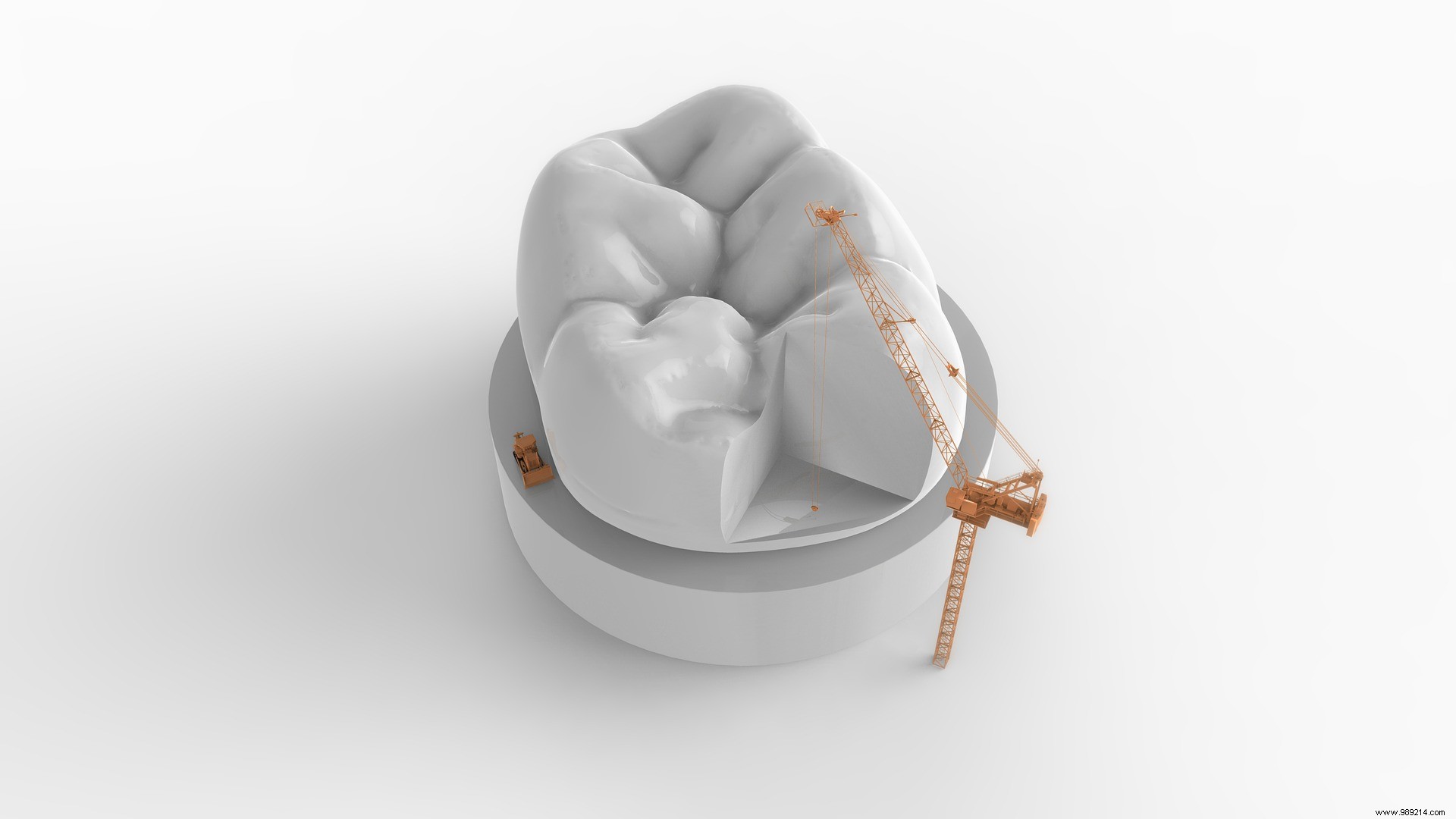You may soon be able to buy a breath mint that can rebuild your tooth enamel while guaranteeing fresh breath. Researchers at the University of Washington are preparing to launch the first clinical trials.
Enamel is the hard, visible layer on the surface of the tooth. This material is known to be stronger than all other constituents of the human body. However, it can also wear out gradually over time, to the point of sometimes revealing the dentin underneath. This is why you develop tooth sensitivity or sometimes gum disease. That's why you have yellow teeth. Too vigorous brushing, acid erosion or even grinding of the teeth are all factors likely to dig into this enamel.
To limit the damage, some people turn to whitening treatments. The latter are mainly based on hydrogen peroxide, a bleaching agent. However, it can also weaken the enamel after prolonged use. As part of a recent study, a team from the University of Washington is developing a promising alternative aimed at reconstructing this enamel which, unfortunately, does not regenerate.
The idea would be to provide lozenges containing a genetically modified peptide (a chain of amino acids), as well as phosphorus and calcium ions, which are building blocks of the tooth enamel. The peptide is derived from amelogenin, the key protein in enamel formation, the researchers explain. It is also essential for the formation of cementum, which forms the surface of the root of the tooth.
Once ingested, the lozenge could then coat a layer of "new enamel" several micrometers thick on the teeth via its peptide, designed to bind to the damaged enamel, all without affecting the soft tissues of the mouth.

Researchers have already tested their lozenges (mint flavor ) on teeth extracted from humans, pigs, rats, as well as live mouse models. This preclinical work suggests that one tablet per day would be enough to maintain the enamel in good condition against normal wear, while two tablets would be enough to rebuild it. The team is now preparing to launch the first clinical trials.
“We have three goals in the clinical trial,” Professor Sarikaya said. “First, demonstrate effectiveness. Second, documentation. Third, benchmarking – see how the whitening effect compares to existing commercial treatments” , according to the dentist Sami Dogan, at the origin of this work. “Each study will take two weeks, and we expect these trials to take no longer than three months” .
If it works, this could be the first treatment capable of truly repairing tooth enamel. Enough to potentially reshape the field of dentistry, while guaranteeing comfortable income for laboratories.